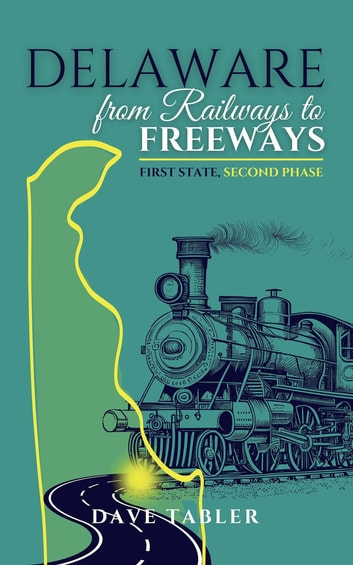
A photographic and curiosity-inspiring tour through the “First State” during the bustling 19th century, Delaware From Railways to Freeways: First State, Second Phase by Dave Tabler is the second installment of his eye-opening series about an oft-overlooked state.
Like Tabler’s first book in this deep-dive state trilogy, each turn of the page reveals stunning images and well-penned anecdotes lined with historical intrigue, surprising revelations, and carefully chosen details that many tourist guides would lack. The 19th century was marked across much of America by massive developments in industry, social progress, and bitter conflicts, and the history of Delaware is at the epicenter of this expansion. There are tales of early attempts at fabricated wings, long before the Wright Brothers, origin stories of music players, motorized cars, matchmaking factories, telescopic breakthroughs, and much more.
Even lifelong residents of Delaware will discover some new revelations of their own state’s history in this densely packed but highly readable book. From inside information about construction techniques and disappearing wonders to unusual religious traditions and maritime lore, the curation of information is broadly varied, without overloading readers with excess exposition, showcasing Delaware’s importance to the country as a whole. Some legendary family names that still carry weight came from Delaware, such as du Pont and Montgomery, and some of the policy decisions in the 19th century persist to this day. For example, Delaware remains one of the most conducive legal environments in America as a corporate tax sanctuary, and countless NYSE companies are still based in the financially advantageous state.
While that may be one of the better-known facts about Delaware, Tabler fills the book with more obscure, but still fascinating detail. Given there are hundreds of resources about the history of every state, Tabler must take a more unique angle in his statehood storytelling. Seemingly small details about centuries-old graffiti add an unexpectedly intriguing tone to this playful yet professional review. The half-page dedicated to a slave-harboring crawlspace of the Corbit family in Odessa may seem like an unusual choice for a relatively short read, but Tabler weights his narrative with the eccentric elements of the state that represent its essence and long-held values.
There are some stories and anecdotes that raise an eyebrow, such as the musing about faking one’s own death on page 62; even after reading the longer shipwreck story in the appendices, the connection to Delaware feels weaker than other stories. The ending of the book is also a bit abrupt; given the title of this book, ending the narrative on “The car was king” makes sense, but it does feel like an opportunity for greater detail about the start of the 20th century is missed. The photographic explanations at the end provide more info for those who want greater depth in their exploration of the state, but constantly flipping back and forth makes for a somewhat disjointed reading experience. Longer text boxes in the actual body of the book, perhaps with one major subject or historical event per page flip, would allow for a fuller balance of explanations.
Despite some small curation critiques, this is a vivid and remarkably well-researched read, offering a fascinating history not just of Delaware, but the entire country as it made the transition to the modern world.
Book Links
STAR RATING
Design
Content
Editing
Get an Editorial Review | Get Amazon Sales & Reviews | Get Edited | Publish Your Book | Enter the SPR Book Awards | Other Marketing Services























Leave A Comment